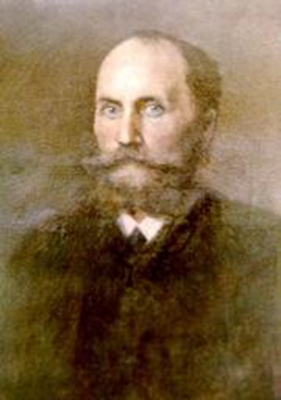Paul Kammerer and synchronicity
 Paul Kammerer (1880-1926) was a forerunner
of C.G. Jung’s synchronicity concept (he coined the term ‘seriality’). Author of Das
Gesetz der Serie (1919), Kammerer was a widely respected researcher of
reptiles and insects. A (probably false) accusation of scientific fraud with
midwife toads made Kammerer take his own life.
Paul Kammerer (1880-1926) was a forerunner
of C.G. Jung’s synchronicity concept (he coined the term ‘seriality’). Author of Das
Gesetz der Serie (1919), Kammerer was a widely respected researcher of
reptiles and insects. A (probably false) accusation of scientific fraud with
midwife toads made Kammerer take his own life.
Just as Jung, Kammerer kept a
log-book in which he registered samples of the coincidences or synchronicities
he experienced from the age of twenty to forty. He listed these samples in Das
Gesetz der Serie and subdivided them over the following categories: 1)
numbers, 2) words and names, 3) persons, 4) mail, particularly letters, 5)
dreams, 6) memories, 7) music, 8) science, 9) casualties and accidents, 10)
crimes, 11) travels, and 12) other cases and events.[1] From the almost one hundred listed
coincidences, I will only select two which are directly related to Paul
Kammerer himself and to his research.
On 16 February
1917 Kammerer reads an article in a newspaper about the Kammersänger
(Court or State singer) [Alfred] Piccaver. Upon subsequently placing an order
in an order book, he notices that an order had just been placed for another Kammersänger.
Entering his name in the order book, he realises that his own name (Kammerer)
and the Court singer’s (Kammersänger) had been juxtaposed. (Kammerer, 1919, p.
26)
On 18 April
1915, Kammerer observed spawning common frogs (rana temporaria) in
the Austrian countryside. This was unusually late in the year. Returning home,
he suddenly spotted a similar frog in a dusty, arid city park, with a lot of
people walking. This surprised him a lot since common frogs were not domestic
in the area; one would rather have expected the agile frog (rana agilis).
(Kammerer, 1919, p. 34)
Someone skilled
in dream interpretation would probably interpret these synchronistic
coincidences in terms of prospective, yet unexpected fertility or success. [2] Since both dreaming and synchronicity
experiences are characterised by an altered state of consciousness, I am
inclined to see synchronicity experiences as a form of ‘day-dreaming’, if not
as alternative forms of ‘somnambulism’.
[1] Paul Kammerer (1919). Das Gesetz der Serie. Eine Lehre von den
Wiederholungen im Lebens- und im Weltgeschehen. Stuttgart & Berlin:
Deutsche Verlags-Anstalt, pp. 24-34.
[2] Coincidentally, straight after quoting Kammerer’s frog example,
when haphazardly consulting Stefan George’s biography for a meaningful example,
I subsequently opened his Poetry. I immediately came across the
following poem: “Komm in den totgesagten park und schau: / Der schimmer ferner
lächelnder gestade · / Der reinen wolken unverhofftes blau / Erhellt die weiher
und die bunten pfade.” / In Stefan George (2003). Die Gedichte.
Stuttgart: Klett-Cotta, p.274.
In line with this would be Richard Wagner’s comment on the vision he had when composing Das Rheingold (he felt like sinking in a flood and laying at the bottom of the Rhine). He understood “dass diese Vision des rauschenden Wassers symbolisch für meine zukünftigen musikalischen Schöpfungen sein sollte” and that “der Strom meines Lebens aus mir selbst fließen sollte.” Conversation with Engelbert Humperdinck in 1880. In Arthur M. Abell (2002, 1955). Gespräche mit berühmten Komponisten. Über die Entstehung ihrer unsterblichen Meisterwerke, Inspiration und Genius. Haslach: Artha Verlag, p. 155.
In line with this would be Richard Wagner’s comment on the vision he had when composing Das Rheingold (he felt like sinking in a flood and laying at the bottom of the Rhine). He understood “dass diese Vision des rauschenden Wassers symbolisch für meine zukünftigen musikalischen Schöpfungen sein sollte” and that “der Strom meines Lebens aus mir selbst fließen sollte.” Conversation with Engelbert Humperdinck in 1880. In Arthur M. Abell (2002, 1955). Gespräche mit berühmten Komponisten. Über die Entstehung ihrer unsterblichen Meisterwerke, Inspiration und Genius. Haslach: Artha Verlag, p. 155.


Reacties
Een reactie posten